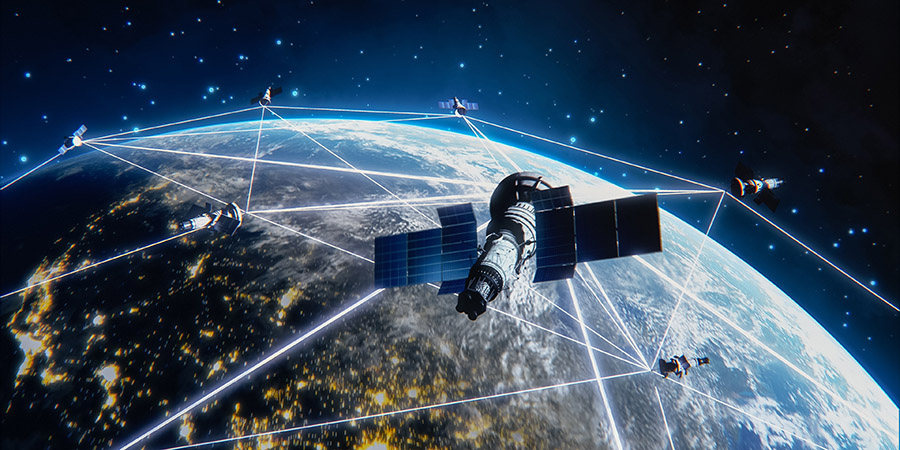As the world navigates the digital age, studies have shown that about 65% of the global population has access to the internet thanks to fiber optics laid out on land, via cable, or through mobile broadband connections. However, a challenge persists in reaching remote areas, leaving over three billion people without any form of connectivity. Satellite internet emerges as an option to provide a solution to the problem of bridging the digital divide and connecting those who have no access to the internet.
The Development of Satellite Technology
The development of satellite technology has allowed various industries to achieve breakthroughs in their quest for better connectivity. Satellites have been instrumental in redefining the means in which we communicate with one another and navigate the challenges in connectivity, especially in remote places all over the world.
The launch of Sputnik 1 in 1957 is considered to be the beginning of the history of satellite technology. This marked the first artificial satellite to orbit the Earth, which subsequently ignited a so-called ‘space race’ among the world's industry leaders. It was the successful launch of Sputnik 1 that lay the groundwork for a new age in terms of communication and connectivity.
The development of communication satellites became an important application after the launch of Sputnik 1. In 1962, Telstar 1 became the world's first active communications satellite, enabling the transmission of live television broadcasts across the Atlantic for the first time. By demonstrating the ability of satellite technology to overcome geographical obstacles and connect individuals all over the world, this accomplishment successfully established its promise.
Development of Global Communication Networks
Satellite internet is a mode of internet connectivity transmitted through satellites orbiting the Earth. While land-based internet access has traditionally been the global standard for internet connectivity, with cables connecting towns, countries, and continents, satellite internet offers a new approach to the way internet connectivity is provided. By transmitting information wirelessly over a network of satellites in space, it eliminates the need for cables to reach difficult terrains or distant places, such as at sea, on oil rigs, or on remote islands. Due to its adaptability, satellite internet has become an indispensable resource in regions where conventional infrastructure provides inadequate support.
The development of satellite technology has allowed global communication networks to transmit data in real-time, broadcast television, and connect people to the internet. One of the most important parts of modern communication networks are geostationary satellites, which are permanently positioned in Earth's orbit.
Among the benefits of the low Earth orbit (LEO) satellites are lower latency and faster data transfers. Companies such as SpaceX and OneWeb have deployed LEO satellites in an effort to bring high-speed internet to every corner of the world, which demonstrates how satellite technology can be a game-changer in closing the digital gap.
Advantages of Deploying Satellite Technology
Satellite technologies offer various benefits that can improve the digital landscape. The speeds of satellite internet have been significantly increased as a result of recent technological breakthroughs. These advancements include the deployment of Very High-Throughput Satellites (VHTS) and the expansion of LEO satellites. This progress enhances internet speeds, ranging from 25Mbps to 150Mbps, which provides an alternative that is both competitive and viable in comparison to regular internet offerings. Furthermore, the reliability of satellite internet is demonstrated by its ability to overcome the physical limits that are associated with traditional cables. During the aftermath of natural disasters, it can serve as a reliable backup that guarantees continued communication even when ground-based systems are unavailable.
Sentinel satellites, which are operated by the European Space Agency, are yet another noteworthy example of the benefits of satellite technology. The Sentinel series offers a comprehensive perspective of the environment on Earth, which contributes to applications such as monitoring agriculture, responding to natural disasters, and planning for metropolitan areas.
Beyond their use in communication, satellites have evolved into useful instruments for observing the Earth. Remote sensing satellites have been customized with sophisticated sensors to help in gathering information on different climates, weather patterns, deforestation, and natural disasters.
The development of satellite technology has revolutionized the way in which we connect and communicate. When it comes to global connectivity, Earth observation, navigation, and disaster response, satellites have evolved from the early days of communication satellites to the complex constellations that orbit the Earth today.
Even as technological advancements continue, satellites will continue to play an increasingly important role in shaping how industries operate. Currently, there are ongoing projects that promise to further strengthen the capabilities of satellite technology, which showcases the commitment of industry leaders to improving connectivity and addressing the digital divide.
